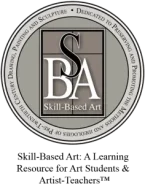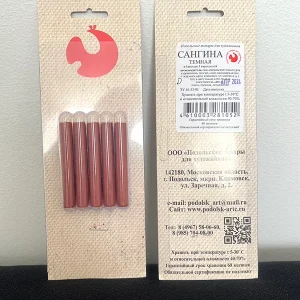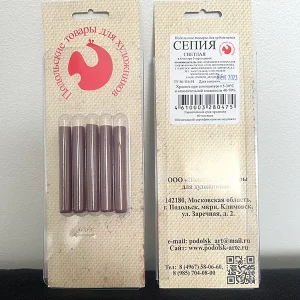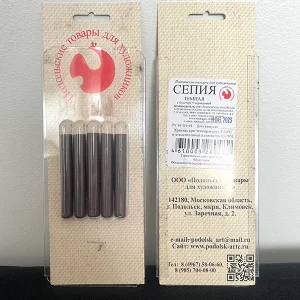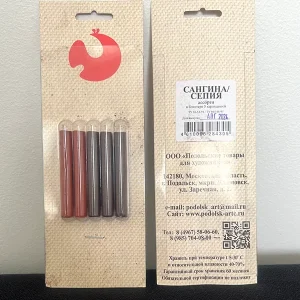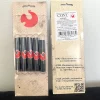Skill-Based Art: A Learning Resource for Art-Students & Artist-Teachers (SBA)™ is a proud supplier of Podolsk drawing sauces, as well as sanguine and sepia soft pastels in Australia.
Podolsk Art Center is an art materials manufacturing company based in the city of Podolsk, which is located in the Moscow region, in the west of Russia. The company has been operating since 1962 in post-Soviet times and has its roots in the Imperial Academy of Fine Arts in St. Petersburg, which it supplied materials to. The precursor to the company was the Podolsk Production Plant of the Art Fund of the Union of Soviet Socialist Republics (USSR), which used to distribute art materials throughout Russia since the early 1900s.
Today, Podolsk is the legal successor of the former Podolsk Production Plant which produces its own line of oil paints, soft pastels (including sepia and sanguine), charcoals, primed and stretched canvases, hardboard painting panels and easels. They are particularly known for being the oldest and original manufacturer of sauce, which is a unique Russian drawing and painting medium that is commonly used in the Russian academic tradition. The exact origins of the medium are unknown, however, it became popular in Russia during the early 1900s. In fact, sauce was produced exclusively only in Russia by the Podolsk Production Plant during Soviet times. Today, Podolsk’s logo represents a stylised image of a painting palette with two strokes of paint in the form of a bird.
Sauce or “coyc” as it is known in Russian, is similar to a soft pastel which is sold in the form of pressed sticks. It is made from a rare form of clay taken from Chasov Yar in Ukraine, which is mixed with natural pigments, carbon and binder. Uniquely, sauce is a highly versatile medium that can be used for both wet and dry applications. In the Imperial Academy of Fine Arts, it was commonly (and continues to be) used to create academic studies of the human figure and portraits.
The high quality of sauce currently produced by Podolsk is commonly known throughout Russia and they provide their products to the Commonwealth of Independent States (CIS). However, sauce remains relatively unknown to artists outside of these states due to the difficulty of obtaining it. There are brands of sauce that are sold in the United States and China, however, these are not the original type which come from Russia.
The issue of Podolsk sauce, sanguine and sepia soft pastels being difficult to obtain in Australia is no longer the case. In effort to bring the Russian academic tradition to Australia, SBA is very proud to announce that we are now a supplier of Podolsk drawing sauces, as well as sanguine and sepia soft pastels. These items are currently in stock and are shipped from Melbourne, Australia.
Application methods:
Sauce is a versatile medium that can be used either dry or wet.
Sanguine and sepia soft pastels must be used only dry.
When sauce is used dry, it is similar to a soft pastel, however, it differs from other materials such as charcoal because of its wide and subtle tonal range. Sauce is very soft and produces almost no dust. When applied to paper, it gives a smooth, velvety sensation which feels somewhat greasy, but not oily.
There are various ways of using the sauce wet. It can be applied dry then a soft brush with water can be used to re-activate the sauce and turn it into a wet media that is similar to watercolour in its consistency. After drying, it takes on the properties of a graphite pencil and can be removed with an eraser, due to its clay content. Subsequently, it can be re-worked either wet or dry.
Alternatively, for wet applications, the sauce can be ground in a mortar and pestle to form a powder and added to water in which it will dissolve completely. It can then be used for painting, similar to an ink wash. Because of the high tinting strength of the sauce, grinding just a few grams provides substantial coverage.
Due to the sauce’s soft materiality, its particles sit between the fibres of the paper, therefore, fixative is not necessary to seal the finished work (the sanguine and sepia soft pastels also don’t require fixing). It is recommended to use either hot pressed or cold pressed cotton rag paper when working with either sauce or sanguine and sepia soft pastels.
Sauce, sanguine and sepia soft pastels are most commonly used in the Imperial Academy of Fine Arts in St. Petersburg, Russia to draw portraits and the human figure.
*Due to the fragile nature of the drawing sauces, as well as the sanguine and sepia soft pastels, some sticks may be broken inside the packaging.
